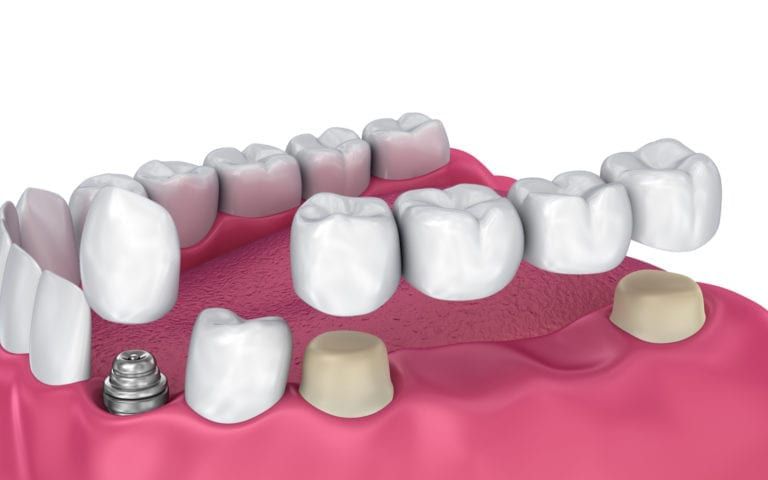The Four Types of Dental Bridges

Dental bridges are the least known but effective pieces of restorative devices for people with missing teeth. These bridges can replace three missing teeth and operate as a fully functional, permanent set of teeth that use other structures as support. All dental bridges contain a pontic, or replacement tooth, that provides chewing surfaces for the mouth, and bridges rely on the neighboring teeth’ health to function. But there are many types of dental bridges that work in different ways, all of which help people with dental conditions regain their smiles back. Let’s look at the four types of dental bridges and learn what they do to help support and replace missing teeth.
Traditional Dental Bridges
As a common type of dental bridge, the traditional dental bridge uses retainer crowns to support the bridge, covering the exposed teeth within the space to protect the natural tooth from damage. This support creates one large bridge unit and only replace one to two missing teeth. The bridge’s structure is supported by the strength and health of the adjacent teeth and bone structure of the mouth, so those with an overall healthy mouth besides missing teeth will be able to qualify for this set. These bridges can last years when properly cared for and installed.
Cantilever Bridges
Cantilever bridges use a retainer on one side of the pontic, meaning the replacement tooth only connects through the retainer. Full dental crowns can act as a retainer, and these forms of bridges work for teeth that provide little to no chewing force. These work with only one crown in cases where there isn’t another adjacent tooth to support a traditional bridge, where the other adjacent tooth is already supporting a bridge and lacks in aesthetically pleasing qualities. Although not as common, these bridges can be especially useful for people with multiple bridges.
Maryland Bridges
Like a traditional bridge, this bridge uses small wing-shaped anchors that sit on top of the adjacent teeth and act as a retainer for the bridge. Unlike crowns, the wings and the way they’re positioned in the mouth help support and replace front teeth, making it the most discreet form of bridge. However, in other cases, Maryland bridges can be easily dislodged by the heavy chewing forces if installed in the back teeth. Maryland bridges also require an extensively strong bond to prevent falling off, because once the original bonding material falters, the subsequent bonds can also falter by proxy.
Implant-Supported Bridges
As a popular form of bridges, implant-supported bridges follow the same pattern as the traditional bridge but uses dental implant abutments as retainers instead of crowns. The abutments provide extra support due to their installation in the jawbone, meaning that a healthy jawbone is required for those looking for a permanent solution to their missing teeth. These bridges also reduce the failure rate of getting cavities, which affect the bridge support, and have the highest rate of success for patients with missing teeth.
If you liked this article, and want to see which options you qualify for, contact Dr. Shadi Heidarian at Heritage Park Dental in Palo Alto, CA, to learn more and schedule an appointment today.

